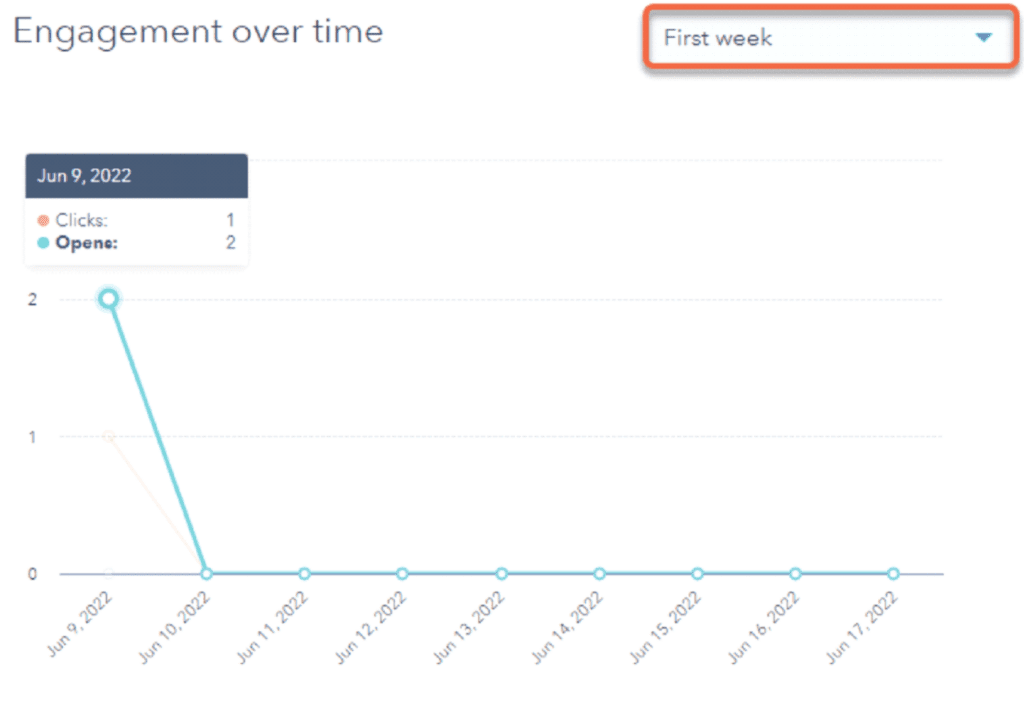In the B2B world, where long sales cycles and relationship-building are critical, year-end planning isn’t just about a final push—it’s about setting the stage for long-term success in 2024.
Let’s break down exactly how to approach this audit, what to change, what to keep, and how to make sure your marketing team and tools are ready to execute at full capacity. By the end of this, you’ll have a clear roadmap and a practical checklist you can save and refer to throughout the rest of the year.
Social Media Strategy: How to Know When to Pivot
While B2C brands may focus on high-volume content, B2B marketing needs to be more thoughtful, with a focus on data and lead quality.
Start by analyzing engagement on LinkedIn, which remains the top platform for B2B marketing. If you’ve noticed a steady decline in engagement—such as fewer interactions on posts, or low click-through rates (CTR) on LinkedIn Ads—it’s a clear indicator to reassess your strategy. LinkedIn recently rolled out new targeting features, like Matched Audiences and Interest Targeting, which allow you to be more precise with your ads. If you’re not seeing results, it might be time to pivot your targeting and take advantage of these tools.
Source: LinkedIn Business
For instance, if you’ve been relying on broad targeting, you may need to switch to Account-Based Marketing (ABM), focusing on specific companies and decision-makers. The goal is to improve lead quality, not just volume, and LinkedIn’s analytics tools are perfect for that. If your CTR on ads is below 0.4%, or if your InMail response rates have dropped, try retargeting website visitors or using Conversation Ads to foster more interactive experiences.
B2B marketers should also pay attention to video content performance. LinkedIn’s native video posts, for example, are getting more traction, especially short-form videos (30-60 seconds) that highlight thought leadership or product demos. If your videos aren’t performing—say, if engagement is under 1.5%—it’s worth revisiting the format and messaging. Focus on customer testimonials, product demos, or industry insights that provide immediate value.
Metrics to Be Patient With: Long-Term Success in B2B
While there’s a tendency to react quickly to every metric, some data points in B2B marketing require patience. One of these is lead nurturing. In the B2B world, sales cycles are often long, and it’s essential to take a long-term view of metrics like email open rates or CTR in nurturing campaigns. If you see gradual improvements, don’t panic if conversions take time—it’s part of the process.
Another metric to be patient with is brand awareness, especially on platforms like LinkedIn. Building authority and recognition takes time. Metrics such as impressions, reach, and video views are all about consistency over months, not weeks. Even if these numbers seem slow-moving, they lay the groundwork for better lead generation and higher conversion rates later on.
Lastly, organic search rankings (SEO) are a marathon, not a sprint. Expect to wait six months to a year to see significant shifts in rankings after optimizing content. It’s more important to focus on consistent content production and backlink building rather than making drastic changes when you don’t see immediate movement.
Festive Content for B2B: How to Make It Work
While holiday marketing is often associated with B2C brands, B2B marketers can take advantage of the festive season to build relationships, nurture leads, and position themselves for Q1 success.
Tailored gift guides are an excellent strategy, especially if you create a holiday resource guide packed with useful content for your audience. For example, a B2B tech company could release a “Holiday Toolkit” featuring whitepapers, case studies, and industry reports—positioning your brand as the go-to expert in your field.
Consider offering digital gift certificates as a way to promote your services. Whether it’s free consultations, software trials, or discounted subscriptions, B2B companies can encourage last-minute purchases or trials that may convert in Q1. Promoting these digital offers helps B2B buyers justify their year-end budget spend, especially for clients with funds left to allocate before their budget resets.
Another effective tactic is running year-end webinars that focus on industry trends and insights for the upcoming year. Position it as a “wrap-up” session, highlighting actionable takeaways that help your audience plan for 2024. This not only engages your current leads but also sets the stage for future partnerships and conversions.
Lastly, a simple but meaningful touch is to send personalized holiday greetings to key clients, thanking them for their partnership and offering an early preview of upcoming products or services. This keeps the relationship warm while showing your clients you value their business. It’s totally fine to wish your audiences a Happy Holiday, but try to avoid the “greeting card” effect that some B2B brands fall into. If it’s all general, stock holiday photos, it starts to look more like a greeting card company than the actual business. Remember to tie the holidays back to something personal to them.
Tools and Teams: Are You Ready for 2025?
As you audit your marketing strategy, it’s just as important to audit your internal resources. Do you have the right team and tools to execute your vision for 2025? Here’s how to assess your readiness.
1. Evaluate Your Team’s Capabilities:
Does your team have the right skill sets? In B2B marketing, having expertise in LinkedIn features, content creation, and data analytics is crucial. If your team is missing any of these skills, it may be time to upskill through training programs or to hire specialized roles. For example, HubSpot Academy offers valuable training on inbound marketing and LinkedIn’s free certification courses can help you master the platform’s tools.
If your content output has been inconsistent, consider outsourcing to freelancers or agencies that specialize in B2B marketing content. This can help you scale your efforts without overwhelming your team, especially when high-quality thought leadership content is critical to success.
2. Assess the Tools You’re Using:
If you haven’t yet implemented marketing automation, now is the time. Tools like HubSpot, Marketo, or Pardot can help streamline lead nurturing, segmentation, and tracking across multiple channels. With B2B’s complex sales cycles, automation allows you to nurture leads effectively and measure progress in real-time.
Check if your CRM system is fully integrated with your marketing tools. Salesforce and HubSpot CRM are excellent options, but they must be synced with your marketing platforms to allow seamless data sharing between teams, which helps improve lead handoffs and customer insights.
3. Plan for Capacity:
Do you have enough resources to execute next year’s plan? If your team is stretched thin, now is the time to establish partnerships with agencies or freelancers. Building these relationships before you’re overwhelmed ensures that when you need to scale up—whether it’s for content creation, video production, or paid media—you have the external support ready to go.
Conclusion
As the year comes to a close, don’t just push for last-minute results—take this opportunity to thoroughly audit and adapt your B2B marketing strategy. Use the insights from this year to refine your approach, ensure your team is equipped with the right skills, and make sure you have the tools and resources to hit the ground running in 2024.
Downloadable Checklist for Your Year-End Audit
To make this process as easy as possible, we’ve created a downloadable B2B Year-End Marketing Audit Checklist to help guide you through your audit and adaptation process. You can download the checklist and either print it or transfer it to your preferred digital tool, like Notion, Evernote, or Trello for easy access and collaboration with your team.
We’ve included simple directions in the document to help you transfer it to these platforms, so you can integrate it seamlessly into your workflow.

Chatterkick Team
The Chatterkick team is made up of envelope-pushers, big thinkers, brainstormers, and conversation starters. We live and breathe social media advertising and all its analytics and data. We love to create engaged, happy social media communities around businesses, and we are dedicated to creating a glowing brand reputation, culture, and voice for our clients. This blog was brought to you in collaboration with multiple Chatterkick team members. Follow me on Twitter



